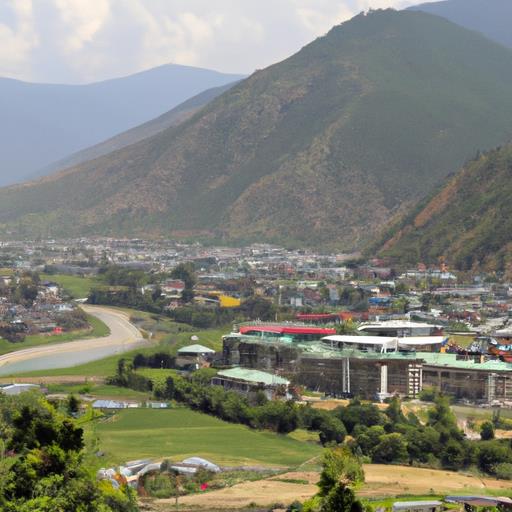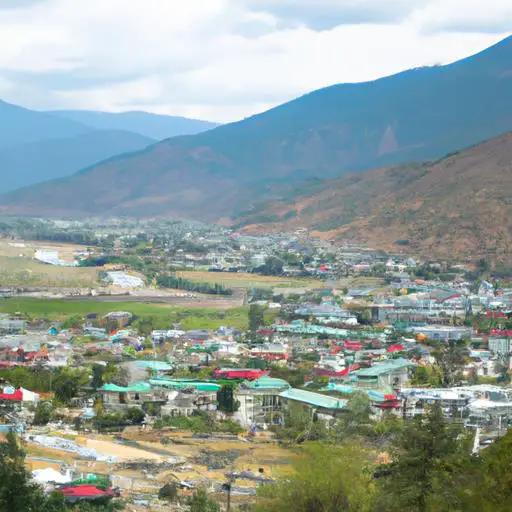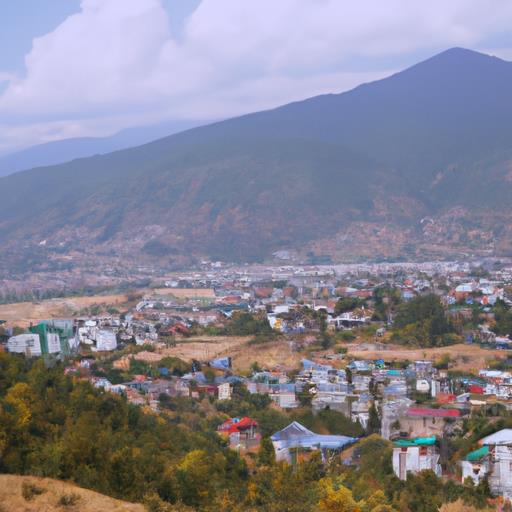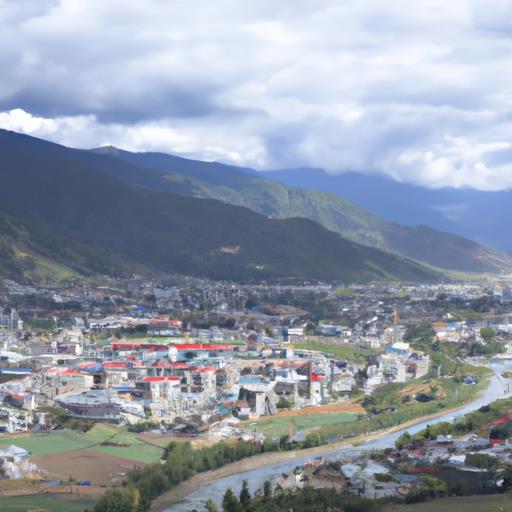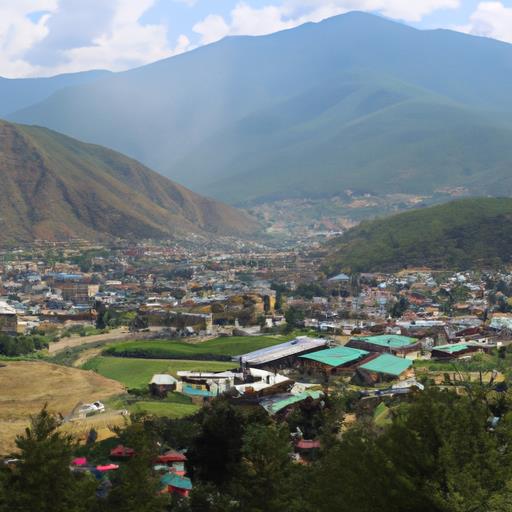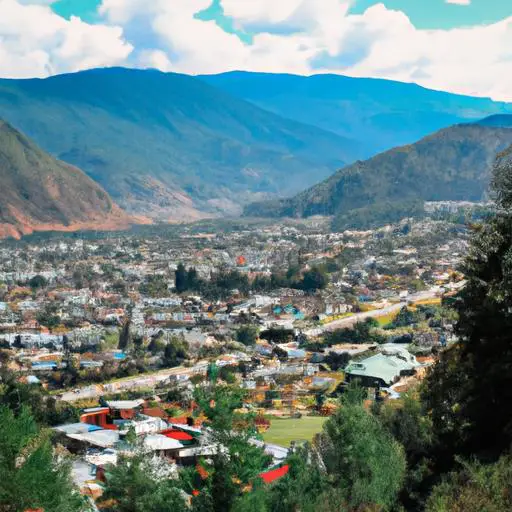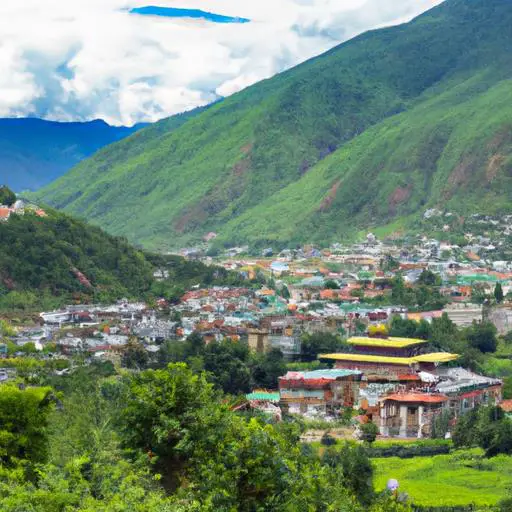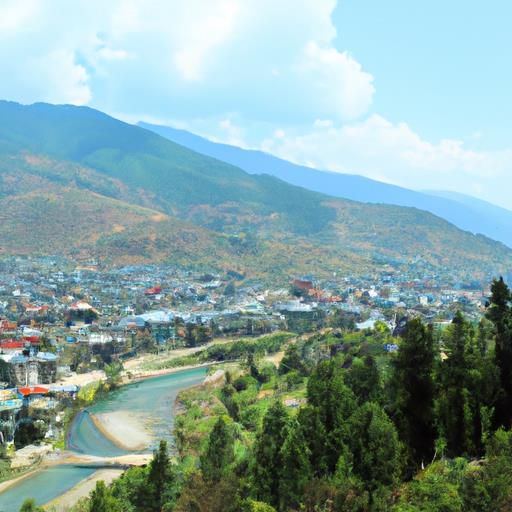Pangri Zampa Monastery, BT : Interesting Facts, History Information & Travel Guide

- By
- Aparna Patel
- |
- 18 Sep, 2023
- |
History & Information About Pangri Zampa Monastery, Bhutan
Situated in the capital city of Thimphu, the Pangri Zampa Monastery is a significant religious and cultural site in the Kingdom of Bhutan. With a rich history spanning several centuries, this monastery holds great importance to the local community and attracts tourists from around the world. The origins of Pangri Zampa Monastery can be traced back to the 16th century. It was initially built as a retreat center for the Zhabdrung Ngawang Namgyal, the Tibetan Buddhist leader who unified Bhutan. However, in the early 18th century, it was converted into a monastic school under the guidance of the Eighth Desi, Druk Rabgye. Since then, it has been serving as an educational institution for young monks. The monastery's name, Pangri Zampa, translates to "temple of great plains" in the local language. It is said that the name was given due to the monastery's location on a flat plain surrounded by lush green hills. The serene and picturesque surroundings add to the overall spiritual ambiance of the place. Pangri Zampa Monastery is known for its unique architectural style, which blends Bhutanese and Tibetan influences. The monastery complex consists of multiple buildings, including classrooms, residential quarters for the monks, prayer halls, and a library. The main prayer hall, adorned with colorful murals and intricate woodwork, is the most impressive structure within the monastery. One of the most fascinating aspects of Pangri Zampa Monastery is its astrology and meditation center. Astrology has deep roots in Bhutanese culture, and the center offers astrology classes and consultations for those seeking guidance. The meditation center, on the other hand, provides a tranquil environment for both monks and visitors to engage in mindfulness practices. The monastery also houses a small museum that showcases various artifacts, scriptures, and religious relics. These exhibits provide a glimpse into Bhutan's religious history and traditions, making it a valuable cultural resource. Pangri Zampa Monastery plays a vital role in preserving Bhutan's spiritual heritage and educating the younger generation about Buddhist philosophy and practices. The monks living within the monastery undergo rigorous training in Buddhist scriptures, rituals, meditation, and other aspects of the faith. This ensures the continuity of Bhutanese Buddhism and allows the monks to serve as spiritual guides and teachers in their communities. For visitors, a trip to Pangri Zampa Monastery offers a unique opportunity to immerse themselves in Bhutanese culture and spirituality. The peaceful ambiance, stunning architecture, and the chance to interact with the monks make it a truly unforgettable experience. In conclusion, Pangri Zampa Monastery holds immense historical and cultural significance in Bhutan. From its origins as a retreat center to its present-day role as an educational institution and spiritual sanctuary, it continues to be a revered site for locals and a must-visit destination for travelers. The monastery's architecture, astrology and meditation center, museum, and the presence of dedicated monks all contribute to its allure. A visit to Pangri Zampa Monastery provides a deeper understanding of Bhutan's religious traditions and offers a chance for personal reflection and spiritual growth.
Similar post
- Lhodrak Kharchhu Monastery, BT : Interesting Facts, History Information & Travel Guide
- Kyichu Lhakhang, BT : Interesting Facts, History Information & Travel Guide
- Jambay Lhakhang, BT : Interesting Facts, History Information & Travel Guide
- Ngawang Namgyal Chorten, BT : Interesting Facts, History Information & Travel Guide
Interesting Lesser Known Facts About Pangri Zampa Monastery, Bhutan City
The Pangri Zampa Monastery, located in Bhutan City, holds several lesser-known facts that make it a fascinating place to explore:
1. Historical Significance: Pangri Zampa Monastery is one of the oldest monasteries in Bhutan, dating back to the 16th century. It served as the residence of the first king of Bhutan, Ugyen Wangchuck, before he took the throne.
2. Astrology and Meditation: The monastery is famous for its astrology and meditation practices. It houses an Astrology School where students learn the art of astrology, astronomy, and other related subjects. Visitors can witness astrologers and monks performing various rituals.
3. Unique Architecture: Pangri Zampa Monastery showcases a blend of Tibetan and Bhutanese architectural styles. The exterior of the monastery is adorned with intricate carvings and colorful paintings, while the interior houses impressive statues, murals, and scriptures.
4. The Rain Calling Tradition: The monastery is known for its traditional rain calling ceremonies. During dry spells or droughts, monks gather and perform rituals to invoke rainfall and bring relief to the region's agriculture. This ancient tradition highlights the important connection between nature and spirituality in Bhutan.
5. Tsechu Festival: The annual Tsechu Festival is one of the most vibrant celebrations held at Pangri Zampa Monastery. During this festival, masked dances and religious performances take place, attracting locals and tourists alike. It provides a unique opportunity to witness the rich cultural heritage of Bhutan.
6. Surrounding Natural Beauty: The monastery is nestled amidst serene natural surroundings. It offers picturesque views of the majestic Himalayan mountain range, lush green forests, and the flowing Wang Chuu River. The peaceful ambiance creates a perfect setting for introspection and spiritual contemplation.
Pangri Zampa Monastery, with its rich history, spiritual practices, and beautiful setting, truly encapsulates the essence of Bhutan's cultural and natural heritage. Exploring this hidden gem is an enlightening experience for any visitor.
Same cateogry post
- Bumthang Owl Trek, BT : Interesting Facts, History Information & Travel Guide
- Ngawang Namgyal Chorten, BT : Interesting Facts, History Information & Travel Guide
Travel Guide For Visiting Pangri Zampa Monastery, Bhutan
If you are planning a trip to Bhutan and want to explore its rich cultural heritage, a visit to Pangri Zampa Monastery should certainly be on your itinerary. Located in Thimphu, the capital city of Bhutan, this monastery holds immense historical and religious significance. Here is a detailed travel guide to help you make the most of your visit.
About Pangri Zampa Monastery: Pangri Zampa Monastery is a Buddhist temple that was established in 1529. It is one of the oldest monasteries in Bhutan, founded by the great-grandfather of the first Shabdrung of Bhutan. This monastery houses a monastic school for astrologers, where young monks are trained in astrology.
Getting There: To reach Pangri Zampa Monastery, you can hire a taxi or take a local bus from Thimphu. The monastery is situated approximately 8 kilometers away from the city center and the journey takes around 30 minutes by road. The route offers picturesque views of the surrounding mountains and valleys.
Exploring the Monastery: As you enter the premises of Pangri Zampa Monastery, you will be captivated by its serene atmosphere. The architectural style of the monastery reflects traditional Bhutanese design with intricate woodwork and colorful paintings. Take your time to admire the beautiful frescoes and carved statues that adorn the walls and altars.
Astrology Classes: One of the unique features of Pangri Zampa Monastery is the astrology classes conducted here. If you are interested, you can observe or even participate in these classes to learn about the ancient art of astrology as practiced in Bhutan. It offers a fascinating insight into Bhutanese culture and belief systems.
Timing and Etiquette: The monastery is open to visitors from Monday to Friday, between 9:00 AM and 5:00 PM. It is advisable to check the timings beforehand to avoid any inconvenience. As you explore the monastery, remember to dress modestly and respectfully. It is customary to remove your shoes before entering the temple halls.
Local Customs: While visiting Pangri Zampa Monastery, it is important to respect the local customs and traditions. Refrain from touching any religious artifacts or disturbing the monks during their prayers or rituals. Maintain a quiet and peaceful demeanor to fully experience the spiritual ambience of the place.
Other Attractions Nearby: If you have more time, you can also visit other nearby attractions in Thimphu such as the Tashichho Dzong, National Memorial Chorten, and Buddha Dordenma statue. These landmarks offer a glimpse into Bhutan's rich cultural and religious heritage.
Read more
- Dobji Dzong, BT : Interesting Facts, History Information & Travel Guide
- Lhakhang Karpo, BT : Interesting Facts, History Information & Travel Guide
- Kila Goempa Nunnery, BT : Interesting Facts, History Information & Travel Guide
- Ngawang Namgyal Chorten, BT : Interesting Facts, History Information & Travel Guide
Frequently Asked Questions about Pangri Zampa Monastery, Bhutan
What is Pangri Zampa Monastery?
Pangri Zampa Monastery is a Buddhist monastery located in Thimphu, the capital city of Bhutan. It is one of the oldest monastic schools in the country.
When was Pangri Zampa Monastery established?
Pangri Zampa Monastery was established in 1529 by Shabdrung Ngawang Namgyal, the unifier of Bhutan.
What is the significance of Pangri Zampa?
Pangri Zampa Monastery holds immense historical and cultural significance in Bhutan. It has served as a monastic school, providing education in Buddhist philosophy, astrology, and traditional rituals for centuries. The monastery is renowned for its teachings on astrology and is believed to have influenced Bhutan's astrology traditions.
What architectural style is seen in Pangri Zampa Monastery?
Pangri Zampa Monastery showcases a fusion of traditional Bhutanese and Tibetan architectural styles. Its distinct white exterior walls with intricate woodwork and ornate paintings exemplify the unique craftsmanship of Bhutan.
Can visitors explore Pangri Zampa Monastery?
Yes, Pangri Zampa Monastery is open to visitors. However, it is primarily a monastic school, so it's advisable to respect the monks' space and adhere to any guidelines or restrictions set within the premises. It offers a rare opportunity to witness Buddhist rituals and gain insights into monastic life.
How can I reach Pangri Zampa Monastery?
Pangri Zampa Monastery is located in Thimphu, which is accessible by road from major cities in Bhutan. You can hire a taxi or use public transportation to reach Thimphu. The monastery is situated close to Dechencholing Palace, approximately 4 kilometers away from the city center.
Are there any nearby attractions to visit along with Pangri Zampa Monastery?
A visit to Pangri Zampa Monastery can be combined with other attractions in Thimphu. Some nearby places of interest include Tashichho Dzong, Buddha Dordenma statue, National Memorial Chorten, and the Folk Heritage Museum. Exploring these attractions will provide a comprehensive experience of Bhutan's culture and heritage.
- Drametse Goempa, BT : Interesting Facts, History Information & Travel Guide
- Gangtey Monastery (Gangtey Goemba), BT : Interesting Facts, History Information & Travel Guide
- Haa Dzong, BT : Interesting Facts, History Information & Travel Guide
- Ngawang Namgyal Chorten, BT : Interesting Facts, History Information & Travel Guide
